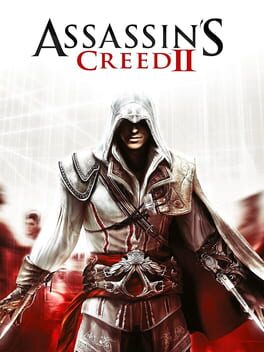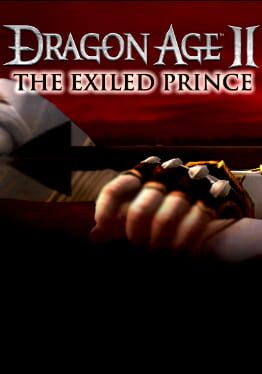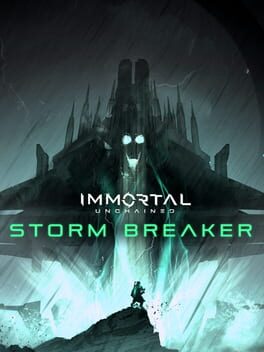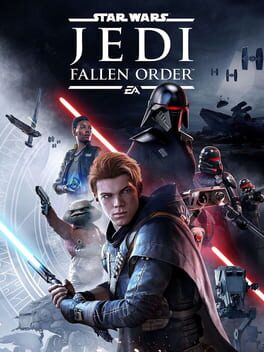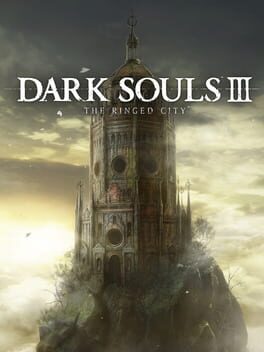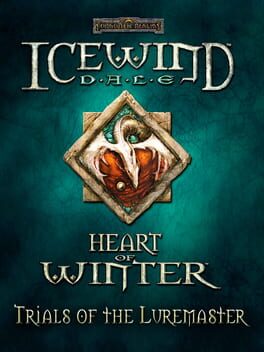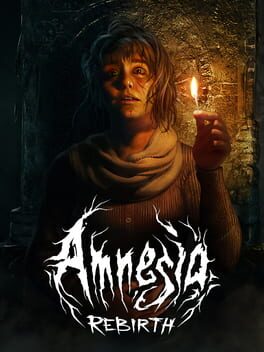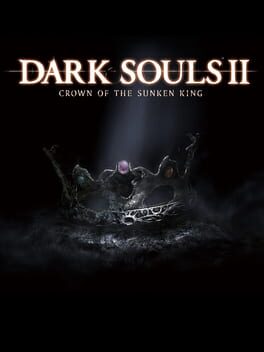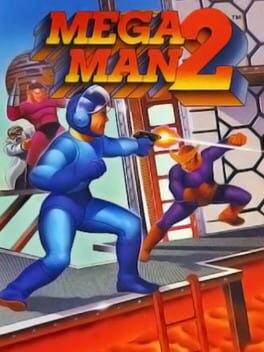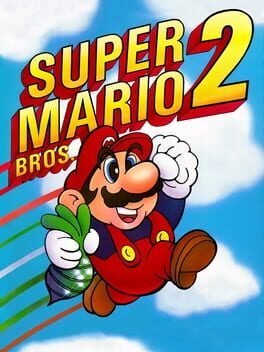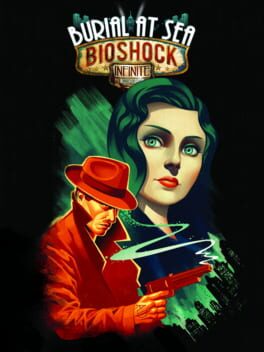squid0812
BACKER
2009
A game that doesn't fix the problems of its predecessor so much as it polishes them to a fine sheen. If the first Assassin's Creed was effectively an unfinished tech demo, then this is the game that the developers at Ubisoft must have truly wanted to make all along. There's just one problem - no matter how much polish you apply to a bad idea, it remains, as ever, a bad idea.
To start with a few minor positives: this game looks excellent, and the different cities that Ezio explores actually stand out as unique and different in a way that never lands in the original game. The gameplay also controls significantly more smoothly in nearly every facet, from the parkour (still mildly enjoyable) to the combat (still unconscionably repetitive). Most importantly, the narrative is a drastic improvement. Granted, it's not anything outstanding - characters having two dimensions rather than one is nothing to be proud of - but this is the Assassin's Creed game that first introduced some of the insane goofiness that Ubisoft would double down on in later games. This is a game in which your character's passage through the birth canal is a playable event, a game that ends with a one-on-one brawl against the Pope in the Vatican basement. It would be wrong to call this stuff good, but it certainly makes for some hilarious, pulpy fun.
Alas, the majority of my time with ACII was not spent enjoying the bizarre campiness. Instead, the vast majority of this game's content consists of some really bland questing. As in the first game, the same basic structure is repeated throughout - complete a few short preparatory quests before attempting to take down an assassination target. Although the preparatory quests are significantly more varied than in the first game, they still tend to consist of banal check-listing (i.e. rescue three groups of allies, light five signal fires, etc.). The assassinations themselves are also more creative, which would have made a bigger difference had I been not just relying on the same unwieldy stealth concepts and ponderous combat from the original game.
Seriously, try to consider how cool some rough contemporaries like Hitman (the old ones) or Dishonored allow you to feel, and then compare it with underwhelming lack of payoff that comes after you are inevitably spotted and are forced to sprint past all of the enemies to clumsily tackle your target in this game. That's how the majority of the assassination missions in this game ended for me - a huge letdown. I've had my share of fun with this series, but these early entries are more than a little tough to come back to.
To start with a few minor positives: this game looks excellent, and the different cities that Ezio explores actually stand out as unique and different in a way that never lands in the original game. The gameplay also controls significantly more smoothly in nearly every facet, from the parkour (still mildly enjoyable) to the combat (still unconscionably repetitive). Most importantly, the narrative is a drastic improvement. Granted, it's not anything outstanding - characters having two dimensions rather than one is nothing to be proud of - but this is the Assassin's Creed game that first introduced some of the insane goofiness that Ubisoft would double down on in later games. This is a game in which your character's passage through the birth canal is a playable event, a game that ends with a one-on-one brawl against the Pope in the Vatican basement. It would be wrong to call this stuff good, but it certainly makes for some hilarious, pulpy fun.
Alas, the majority of my time with ACII was not spent enjoying the bizarre campiness. Instead, the vast majority of this game's content consists of some really bland questing. As in the first game, the same basic structure is repeated throughout - complete a few short preparatory quests before attempting to take down an assassination target. Although the preparatory quests are significantly more varied than in the first game, they still tend to consist of banal check-listing (i.e. rescue three groups of allies, light five signal fires, etc.). The assassinations themselves are also more creative, which would have made a bigger difference had I been not just relying on the same unwieldy stealth concepts and ponderous combat from the original game.
Seriously, try to consider how cool some rough contemporaries like Hitman (the old ones) or Dishonored allow you to feel, and then compare it with underwhelming lack of payoff that comes after you are inevitably spotted and are forced to sprint past all of the enemies to clumsily tackle your target in this game. That's how the majority of the assassination missions in this game ended for me - a huge letdown. I've had my share of fun with this series, but these early entries are more than a little tough to come back to.
This review contains spoilers
Adding Sebastian to the game was really a narrative necessity, given that the base game was noticeably lacking a character to lend some stakes to the whole subplot in which the Divine tries forge a middle ground between the Templars and mages. But the character himself is such a bore that the narrative dividends never really materialize (this point is perfectly crystallized in the goofy scream Sebastian gives after the Chantry blows up - it's a genuinely funny moment of unintentional hilarity, when they were clearly going for pathos).
But genuinely, there's really nothing to recommend about interacting with this added character. His main concept is that he's pious, which in this game means he mopes a lot and petulantly complains about the Maker's failure to strike down his enemies. Then, when you finally do that for him, he starts thanking the Maker. What an asshole. There's also a chaste romance that female Hawke can pursue with him, which might have been interesting in a game with better writing than Dragon Age II. Add in the fact that the quests added here are basic dungeon crawls with no significant gameplay innovation to make them stand out, and the idea that they charged money for this becomes more than a little vexing.
But genuinely, there's really nothing to recommend about interacting with this added character. His main concept is that he's pious, which in this game means he mopes a lot and petulantly complains about the Maker's failure to strike down his enemies. Then, when you finally do that for him, he starts thanking the Maker. What an asshole. There's also a chaste romance that female Hawke can pursue with him, which might have been interesting in a game with better writing than Dragon Age II. Add in the fact that the quests added here are basic dungeon crawls with no significant gameplay innovation to make them stand out, and the idea that they charged money for this becomes more than a little vexing.
2022
It's hard to know to where to start on this one. Elden Ring put me in a three-month-long hole where it was effectively the only piece of media that I consumed or thought about. It only took me about 10-15 hours of play to realize that I was experiencing one of my all-time favorite games. The game spent the remaining 100 or so hours inflicting the Stockholm Syndrome on my critical faculties, so that I started to savor even its most obnoxious (Hero's graves, the Shunning-Grounds) and bland (most caves) elements. Indeed, Elden Ring isn't flawless, but with just an absurd amount of engaging things to see and do and manifold options for building out a character and playstyle, the sheer sense of scale and largesse tends to drown out all but the most egregious flaws. This is a game where the player almost always has innumerable options to pursue the moment their present task becomes the least bit tiresome. Elden Ring doesn't merely resist criticism; it steamrolls it with a wave of nigh-endless choice.
Truthfully, most everything else here is just what we have come to expect from FromSoft at this point. Did anyone really think that this game wasn't going to have dense and layered level design, evocative set pieces, or haunting atmospherics? From Software has been churning this stuff out since Demon's Souls. Their reputation as the best in the business in this regard is well-earned and almost irreproachable, so it's no surprise that Elden Ring continues this streak of excellence.
There are a few refreshing course changes here, though. Count me among the group that thinks that the inclusion of George R.R. Martin was an important boon for this game's narrative. After the dumpster fire of knowing winks and tired retreads that stood in for a narrative in Dark Souls III, From had already started to shift in a more direct and less nebulous direction with Sekiro. Here, the story hits a satisfying balance: there's a lot more exposition than in any Souls game, but there is still room for the ambiguity and oblique inferencing that lore divers eat up. I hadn't felt this engaged by a FromSoft game's narrative since Bloodborne.
More surprising is the turn toward increased accessibility, as From had seemed to be moving in the opposite direction prior to Elden Ring. Bloodborne and (especially) Sekiro are both fairly prescriptive in terms of assigning a quasi-mandatory playstyle (i.e. melee). So I was floored to see that Elden Ring goes so strongly in the opposite direction. Shields work now. Summons are plentiful. Magic is once again a bit overpowered. None of these changes really affected my first playthrough (power-stance twinblades), but their inclusion and viability make me excited to replay this when the inevitable DLC hits down the road.
This game has been talked to death, so I won't go on longer beyond saying that this felt like an apotheosis of the path From Software has been on for the past decade plus. It's a rare and special experience that left me wanting more of what these devs are selling - it might even be the game that finally forces me to overcome my prejudice against mechs and try out Armored Core...
Truthfully, most everything else here is just what we have come to expect from FromSoft at this point. Did anyone really think that this game wasn't going to have dense and layered level design, evocative set pieces, or haunting atmospherics? From Software has been churning this stuff out since Demon's Souls. Their reputation as the best in the business in this regard is well-earned and almost irreproachable, so it's no surprise that Elden Ring continues this streak of excellence.
There are a few refreshing course changes here, though. Count me among the group that thinks that the inclusion of George R.R. Martin was an important boon for this game's narrative. After the dumpster fire of knowing winks and tired retreads that stood in for a narrative in Dark Souls III, From had already started to shift in a more direct and less nebulous direction with Sekiro. Here, the story hits a satisfying balance: there's a lot more exposition than in any Souls game, but there is still room for the ambiguity and oblique inferencing that lore divers eat up. I hadn't felt this engaged by a FromSoft game's narrative since Bloodborne.
More surprising is the turn toward increased accessibility, as From had seemed to be moving in the opposite direction prior to Elden Ring. Bloodborne and (especially) Sekiro are both fairly prescriptive in terms of assigning a quasi-mandatory playstyle (i.e. melee). So I was floored to see that Elden Ring goes so strongly in the opposite direction. Shields work now. Summons are plentiful. Magic is once again a bit overpowered. None of these changes really affected my first playthrough (power-stance twinblades), but their inclusion and viability make me excited to replay this when the inevitable DLC hits down the road.
This game has been talked to death, so I won't go on longer beyond saying that this felt like an apotheosis of the path From Software has been on for the past decade plus. It's a rare and special experience that left me wanting more of what these devs are selling - it might even be the game that finally forces me to overcome my prejudice against mechs and try out Armored Core...
For all its obvious flaws, the main campaign of Immortal: Unchained actually showed a good amount of promise in laying out a path forward for Souls-style shooters. Unfortunately, the DLC doubled down on some of the very worst gameplay elements from the main game. The whole experience is an overly hostile slog, jam-packed with enemies whose tankiness and damage output are extremely excessive (there is even one new enemy that literally can’t be killed unless you hit one specific, pixel-sized spot that is only occasionally exposed). It’s to the point where it feels like the only option is to either run or cheese your way through. Which doesn’t leave much time to take in the new levels - a shame, considering the dried out sea bed and sunken ships offer a fairly interesting new biome in a game full of generic tech hallways.
The final boss of the DLC is almost good, but suffers from two issues, one of which is basically unforgivable: the encounter starts with a very tough, wave-based fight against regular enemies that you have to repeat every time you try to kill the boss (in case it wasn’t clear, this is tedious and awful). Also, the boss himself is about 20% too fast for the game’s engine - I knew the moves and how to deal with them, but sometimes my guy simply didn’t move out of the way quickly enough. It’s deeply frustrating to have your avatar skill fail to match up with player skill.
Ultimately, this is a DLC that is discouraging more than anything else. The makers of I:U had some cool ideas about how to take Soulslike gameplay and meld it with third person shooter mechanics. Unfortunately, it appears with this DLC that the devs bought into the toxic, ‘git gud’, difficulty-fuck messaging that emanates from the worst corners of Souls fandom.
The final boss of the DLC is almost good, but suffers from two issues, one of which is basically unforgivable: the encounter starts with a very tough, wave-based fight against regular enemies that you have to repeat every time you try to kill the boss (in case it wasn’t clear, this is tedious and awful). Also, the boss himself is about 20% too fast for the game’s engine - I knew the moves and how to deal with them, but sometimes my guy simply didn’t move out of the way quickly enough. It’s deeply frustrating to have your avatar skill fail to match up with player skill.
Ultimately, this is a DLC that is discouraging more than anything else. The makers of I:U had some cool ideas about how to take Soulslike gameplay and meld it with third person shooter mechanics. Unfortunately, it appears with this DLC that the devs bought into the toxic, ‘git gud’, difficulty-fuck messaging that emanates from the worst corners of Souls fandom.
A lot of potential here, weighed down by a few glaring missteps. Respawn should be applauded for creating a single-player Star Wars game that is rigorous and challenging while also largely avoiding the stench of an EA-style microtransaction nightmare. Respawn’s specialty - satisfying movement mechanics that make the traversal of the game world a consistent joy - is on full display here. There are only a few Metroidvania-style movement upgrades to track down, but each of them adds a really dynamic new element to the platforming, which ensures that the traversal remains fresh and enjoyable throughout. I’m a bit more ambivalent on the combat, which apes a number of features from Dark Souls and Sekiro. Fighting enemies one-on-one is generally quite fun, and nailing a perfectly timed parry is always satisfying. Unfortunately, fighting anything one-on-one is pretty rare - this game loves to throw you into fights with large mobs of weak enemies. Consequently, I ended up spending a lot of time in hit-and-run mode. While this hectic style can have its own pleasures, I don’t think that the encounter design does the game any favors by de-emphasizing one-on-one duels. The other thing that threw me off with the combat was the ability of some enemies to poise through almost anything - as a long-time Souls player, it was disconcerting to see even basic enemies experience zero physical reaction to being hit. I got used to it after awhile, but it contributed to a sense of fiddliness in some fights. A bit more weightiness and feedback would have suited my taste. Still, despite not reaching its peak potential, the combat is never less than serviceable, and it occasionally succeeds in being more than that.
One of the main flaws with this game is quite obvious (which also means it’s eminently fixable in a potential sequel). For a game that heavily encourages the exploration of optional areas, there’s just not enough cool stuff to find. There are a number of navigation puzzles and backtracking opportunities scattered throughout the different planets the player visits, but it is very rare to find any worthwhile while completing them. Occasionally, you will find something moderately empowering like additional heals or a boost to your HP or Force meter. But usually the only reward is a cosmetic item (sorry, you’ll just never convince me to care what color Cal’s poncho is) or a piece of random lore that is completely disconnected from the plot. It’s hard to overstate how powerfully disappointing it is to explore a hidden nook, only to be rewarded with something that has almost zero effect on your character’s abilities or the overarching narrative. Seriously, it got to the point where I was avoiding chests like the plague. Again, this is easily fixable - maybe replace the perfunctory skill tree with more optional upgrades that you can find out in the world? That’s just one possibility, but really anything would be better than what they tried in this game. Respawn - your developers did sterling work in creating these layered and detailed levels with tons of optional areas - now just give me a reason to actually go to these places!
The other problem with this game isn’t as easily rectified. In fact, I hesitate to even hold this against the developers. But the dull, poorly paced narrative of this game, especially in the first half, is essentially Star Wars mad libs. The junkyard-chic aesthetic of the series’s interiors also actively detracts from what is otherwise a pretty attractive game (as long as you’re outdoors). Obviously, EA never would have bankrolled a game like this without the Star Wars brand attached, but the weight and expectations that come along with the series don’t translate into a richer narrative experience, at least not until the story picks up a bit in the second half.
As with most of Respawn’s games, this really sings on a moment-to-moment basis. Only on reflection do the cracks really start to show. Still, the problems here are really more in the finer details rather than the core gameplay, and I would play the hell out of a sequel that has some of the edges sanded down.
One of the main flaws with this game is quite obvious (which also means it’s eminently fixable in a potential sequel). For a game that heavily encourages the exploration of optional areas, there’s just not enough cool stuff to find. There are a number of navigation puzzles and backtracking opportunities scattered throughout the different planets the player visits, but it is very rare to find any worthwhile while completing them. Occasionally, you will find something moderately empowering like additional heals or a boost to your HP or Force meter. But usually the only reward is a cosmetic item (sorry, you’ll just never convince me to care what color Cal’s poncho is) or a piece of random lore that is completely disconnected from the plot. It’s hard to overstate how powerfully disappointing it is to explore a hidden nook, only to be rewarded with something that has almost zero effect on your character’s abilities or the overarching narrative. Seriously, it got to the point where I was avoiding chests like the plague. Again, this is easily fixable - maybe replace the perfunctory skill tree with more optional upgrades that you can find out in the world? That’s just one possibility, but really anything would be better than what they tried in this game. Respawn - your developers did sterling work in creating these layered and detailed levels with tons of optional areas - now just give me a reason to actually go to these places!
The other problem with this game isn’t as easily rectified. In fact, I hesitate to even hold this against the developers. But the dull, poorly paced narrative of this game, especially in the first half, is essentially Star Wars mad libs. The junkyard-chic aesthetic of the series’s interiors also actively detracts from what is otherwise a pretty attractive game (as long as you’re outdoors). Obviously, EA never would have bankrolled a game like this without the Star Wars brand attached, but the weight and expectations that come along with the series don’t translate into a richer narrative experience, at least not until the story picks up a bit in the second half.
As with most of Respawn’s games, this really sings on a moment-to-moment basis. Only on reflection do the cracks really start to show. Still, the problems here are really more in the finer details rather than the core gameplay, and I would play the hell out of a sequel that has some of the edges sanded down.
2014
Imagine going out to a trendy, new restaurant. You’re initially concerned that it’s all flash and no substance, but then they serve you an excellent appetizer, one that builds the expectations for a superb entree. But then that entree…it just never comes. You wait and wait, until someone finally informs you that your meal will only become available in two years, and that you’re going to have to pay an additional 60 bucks to actually get it. That’s the story of Titanfall for me. In 2014, Respawn gave us a game that has some of the most tactilely pleasing movement mechanics of any first-person shooter. They also gave us a game (at full price!) with a dire lack of substance beneath its surface gameplay mechanics.
The most obvious issue here is the lack of narrative content. This isn’t an intrinsic issue per se - a game like Overwatch does just fine operating with only a basic premise rather than a fully developed narrative. The multiplayer mechanics of Titanfall, though novel and enjoyable over a short period, just aren’t complex enough to allow this approach to work. Frustratingly, there are traces of narrative here - if you play on the campaign server, something resembling a story plays in the background as you proceed through a continuously looping series of multiplayer matches. Unfortunately, it’s mostly just background noise that doesn’t do much to provide the kind of context and detail that might have made the setting come alive.
Additionally, many of the features here feel like retreads from Call of Duty and its various imitators - the maps (functional but bland), the different modes (generic), the character progression. All of these systems are mailed in a way that precludes the kind of sustained interest that games like this thrive on.
Which is too bad, because the moment-to-moment gameplay in Titanfall never feels less than inspired. But it turns out that merely offering excellent traversal and shooting mechanics just isn’t enough when every other element of the game is so thoroughly humdrum. An appealing proof of concept, sure, but not much more.
The most obvious issue here is the lack of narrative content. This isn’t an intrinsic issue per se - a game like Overwatch does just fine operating with only a basic premise rather than a fully developed narrative. The multiplayer mechanics of Titanfall, though novel and enjoyable over a short period, just aren’t complex enough to allow this approach to work. Frustratingly, there are traces of narrative here - if you play on the campaign server, something resembling a story plays in the background as you proceed through a continuously looping series of multiplayer matches. Unfortunately, it’s mostly just background noise that doesn’t do much to provide the kind of context and detail that might have made the setting come alive.
Additionally, many of the features here feel like retreads from Call of Duty and its various imitators - the maps (functional but bland), the different modes (generic), the character progression. All of these systems are mailed in a way that precludes the kind of sustained interest that games like this thrive on.
Which is too bad, because the moment-to-moment gameplay in Titanfall never feels less than inspired. But it turns out that merely offering excellent traversal and shooting mechanics just isn’t enough when every other element of the game is so thoroughly humdrum. An appealing proof of concept, sure, but not much more.
No reinventing the wheel here. This is just more Horizon, with all of the accompanying caveats. The area this expansion adds to the game is impressively large and utterly gorgeous in a way that stands out in what was already an attractive game. With that being said, the stuff that you actually do in the new area has barely changed. There’s a fairly enjoyable main quest that once again hinges on a clever connection between a tribal society and the AI left behind by a more advanced civilization. Unfortunately, the appropriation of real world tribal customs is more egregious than ever here; there are aspects of the relationship between Aloy and the Banuk that made me audibly groan while playing. Still, there is a satisfying narrative payoff if you can look past the clunky portrayal of tribal society.
The side content is slightly better than it was in the base game, but it still wasn’t much to write home about for me. The addition of the control towers that buff and heal hostile machines is a cool idea that is a significant improvement on the corrupted zones from the main game. The side content also does a slightly better job of offering incentives for completing it, including potential spear upgrades and improved XP rewards. I just always ended up feeling like I was playing a Ubisoft checklist game whenever I diverged too far from the critical path - as with the base game, I think I would’ve liked this more as a 5 hour linear adventure rather than as 15 hours of open world bloat.
I have the least to say about the combat aspect of the expansion. They added a couple of rather challenging new machine types, which adds in a bit of welcome novelty to the fights. But really, little has changed from the main game - as long as Aloy is taking on massive robo-creatures, the archery-based combat remains deep and satisfying as hell.
The inability to imagine more substantial tweaks on the gameplay and world-building of the base game here irks me slightly. But nonetheless, if you had a good time with the main campaign, then there’s little reason to believe that you won’t have fun with this. In that sense, this expansion’s lack of innovation is both a strength and a weakness.
The side content is slightly better than it was in the base game, but it still wasn’t much to write home about for me. The addition of the control towers that buff and heal hostile machines is a cool idea that is a significant improvement on the corrupted zones from the main game. The side content also does a slightly better job of offering incentives for completing it, including potential spear upgrades and improved XP rewards. I just always ended up feeling like I was playing a Ubisoft checklist game whenever I diverged too far from the critical path - as with the base game, I think I would’ve liked this more as a 5 hour linear adventure rather than as 15 hours of open world bloat.
I have the least to say about the combat aspect of the expansion. They added a couple of rather challenging new machine types, which adds in a bit of welcome novelty to the fights. But really, little has changed from the main game - as long as Aloy is taking on massive robo-creatures, the archery-based combat remains deep and satisfying as hell.
The inability to imagine more substantial tweaks on the gameplay and world-building of the base game here irks me slightly. But nonetheless, if you had a good time with the main campaign, then there’s little reason to believe that you won’t have fun with this. In that sense, this expansion’s lack of innovation is both a strength and a weakness.
In some ways, The Ringed City is a sad example of From Software buying into their own marketing. The level design choices here often seem like they were dictated by what would be most hostile to the player rather than what would be interesting or evocative. So you end up with plenty of outlandish BS that feels like it was produced by a much lesser company - giants that repeatedly spawn hundreds of archers to kill you AND who respawn when you take them out; a staircase with an important NPC encounter that has 5 or 6 damage sponge knights copy-and-pasted all over it; a random boss from the base game bizarrely showing up in a remote corner of (yet another) swamp. There are some very elementary game design principles that are just ignored here, presumably to placate the challenge-hound element of the Souls fandom. And that sucks, to be quite frank.
Thankfully, this was still made by From Software, so it’s not without its moments. The first part of the DLC (the Dreg Heap) looks just OK, but once you reach the actual Ringed City, pretty much everything is pure eye candy. And despite some genuinely infuriating enemy layouts, most of the new enemies look great and are fun to fight one-on-one (the little bastards that hide on walls while cursing you from afar are an exception). Some people play these games exclusively for the bosses, and on that front, this DLC is fairly successful (although they all have about 20% too much HP). The Demon Prince is nonsense from a holistic standpoint (we just killed the last of the demons in the base game - why is there another one?), but is also one of the more well-designed dual bosses in the series. Midir is perhaps a bit too punishing considering that he has a lot of moves to learn, but once I mastered dodging him, it was a satisfying fight. Gael is an appropriately monumental final boss for the series - he’s a brilliant mixture of Artorias and the Orphan of Kos. The only real dud for me was the PvP gimmick boss, which lacks the grandeur of the Old Monk, or even the Looking Glass Knight from DSII.
The emphasis on relentless hostility rather than thoughtful exploration in the level design makes this one of my least favorite FromSoft expansions, but I won’t deny it has some minor visual and mechanical appeal. It says a lot about From Software’s capabilities that I was still able to enjoy parts of this despite the toxic, ‘git gud’ ethos that pervades a lot of the design choices.
Thankfully, this was still made by From Software, so it’s not without its moments. The first part of the DLC (the Dreg Heap) looks just OK, but once you reach the actual Ringed City, pretty much everything is pure eye candy. And despite some genuinely infuriating enemy layouts, most of the new enemies look great and are fun to fight one-on-one (the little bastards that hide on walls while cursing you from afar are an exception). Some people play these games exclusively for the bosses, and on that front, this DLC is fairly successful (although they all have about 20% too much HP). The Demon Prince is nonsense from a holistic standpoint (we just killed the last of the demons in the base game - why is there another one?), but is also one of the more well-designed dual bosses in the series. Midir is perhaps a bit too punishing considering that he has a lot of moves to learn, but once I mastered dodging him, it was a satisfying fight. Gael is an appropriately monumental final boss for the series - he’s a brilliant mixture of Artorias and the Orphan of Kos. The only real dud for me was the PvP gimmick boss, which lacks the grandeur of the Old Monk, or even the Looking Glass Knight from DSII.
The emphasis on relentless hostility rather than thoughtful exploration in the level design makes this one of my least favorite FromSoft expansions, but I won’t deny it has some minor visual and mechanical appeal. It says a lot about From Software’s capabilities that I was still able to enjoy parts of this despite the toxic, ‘git gud’ ethos that pervades a lot of the design choices.
The rarest of breeds: an expansion-within-an-expansion. In the mythical days of yore when a 10-15 hour expansion was somehow considered too short, Black Isle Studios added this utterly extraneous mini-module onto Icewind Dale’s Heart of Winter expansion as a mea culpa. As previously implied, this has literally nothing to do with the narrative of the aforementioned expansion or the base game - instead, your party is unceremoniously and involuntarily teleported to a fort in the middle of the desert to be ‘tested’ by the titular villain. Despite the jarringly disconnected nature of the premise, this isn’t without some minor successes. The dungeon design, as in most of Icewind Dale, is largely quite strong. In fact, the addition of some elementary puzzles, mostly absent in the main game, feels like a straight-up improvement. For roughly the first third or so, the enemy mobs feel appropriately (rather than relentlessly) challenging.
Sadly, this gentle difficulty curve doesn’t last. Once you enter the main keep, the game reverts back to attrition mode. The latter parts of this expansion are even more unforgiving than the hardest parts of the main game. It feels like there is an enemy encounter designed to push your party to its breaking point every two minutes. I respect and even enjoy the crunchiness of 2nd Edition D and D, but when it’s this unrelenting, I just get exhausted. Mercifully, the actual Luremaster himself is a fairly straightforward final boss. The grind to reach him is borderline-intolerable, though.
Sadly, this gentle difficulty curve doesn’t last. Once you enter the main keep, the game reverts back to attrition mode. The latter parts of this expansion are even more unforgiving than the hardest parts of the main game. It feels like there is an enemy encounter designed to push your party to its breaking point every two minutes. I respect and even enjoy the crunchiness of 2nd Edition D and D, but when it’s this unrelenting, I just get exhausted. Mercifully, the actual Luremaster himself is a fairly straightforward final boss. The grind to reach him is borderline-intolerable, though.
2020
It’s difficult to think of a game I’ve played in recent memory that comes closer to being something I really love while also simultaneously being a deeply flawed mess. There are elements here that rank among the creepiest in the Amnesia series, but after a strong opening third or so, I just couldn’t really find my bearings.
First, the good. The opening 3-4 hours of this game are quite tense and frightening, in a way that reminded me of The Dark Descent. As in that game, the combination of expertly tuned sound design and disturbing imagery (that shows just enough to create dread while also maintaining a sense of mystery) is very effective early on. For me, this climaxes in a terrifying collection of sequences set in an abandoned French fort. This section of the game, from the beginning through the fort, functions as quality horror on both a conceptual and a visceral level.
Another improvement from earlier games in the series is that there is a significantly deeper level of character development, both for the protagonist (whose impending motherhood serves as a method of generating emotional investment in the story while also acting as source of deep-seeded apprehension) and for her fairly well-sketched cadre of former companions, who are mostly presented in flashbacks. Whereas Daniel from The Dark Descent was largely silent outside of reciting journal entries, the protagonist in this game is quite chatty - and while this talkiness isn’t always welcome, the voice actress does strong enough work that I largely bought the character and their motivation.
Sadly, it was the narrative around the protagonist that just straight-up didn’t work for me. There are a few reasons for this. For one, the pacing in this game is just awful. After I completed the section in the French fort, I figured that I was moving toward a climax of some kind…but instead, the game just goes on and on, with very little interesting plot development to justify some of the rather boring levels. Seriously, you will have to traverse every kind of subterranean environment you can think of - tombs, catacombs, mines, and so on - and they all feel just as bland as one might expect. This isn’t a particularly long game (maybe 9-10 hours), but I ended up feeling that at least 30% percent of it should have been cut.
The pacing issues are intimately connected to problems with the narrative, which is very unfocused. The main thrust with the protagonist recovering memories of a deeply upsetting moral quandary is fine, but it is weighed down by a bunch of unnecessary subplots that go nowhere. Which is unfortunate, because some subtlety might have made these dead-end subplots function as interesting Easter eggs. Instead, everything’s forced down the player’s throat. Even an inattentive player would likely be able to use environmental details to infer a connection between the alien dimension of this game and the plot events of The Dark Descent, but instead of leaving it at that, the game insists that you hunt down notes that clumsily and unnecessarily underline this same point. Throughout the game, elements of the story that should have been left ambiguous are rendered painstakingly obvious. Given that the Amnesia games rely at least partially on an element of mystery and fear of the unknown to draw the player in, the heavy-handed storytelling method on display is a major problem.
I also had a mechanical objection, which is that they ruined the brilliant sanity mechanic from The Dark Descent. In that game, losing your sanity messed with the interface in a way that triggered panic and anxiety in the player. But it never halted the play or took away control. In Rebirth, sanity is replaced with fear. My problem is that when your character is overcome by fear, it effectively shifts the game into a quasi-cutscene - the screen slowly begins to black out and a short jump scare sizzle reel plays as you try to button mash your way out of it. I hate how this takes control away from the player and seems to basically freeze whatever is going on in the game world at that moment. There is a plot element that explains why fear works like it does, but it just didn’t justify the mechanical downgrade from the sublime sanity mechanic for me.
As a huge fan of the work of Frictional Games, I went into this expecting greatness. I ended up disappointed, but also happy that I played this. There is a great game rattling around in here somewhere - it’s just buried under some clunky storytelling and a bunch of unnecessary chaff.
First, the good. The opening 3-4 hours of this game are quite tense and frightening, in a way that reminded me of The Dark Descent. As in that game, the combination of expertly tuned sound design and disturbing imagery (that shows just enough to create dread while also maintaining a sense of mystery) is very effective early on. For me, this climaxes in a terrifying collection of sequences set in an abandoned French fort. This section of the game, from the beginning through the fort, functions as quality horror on both a conceptual and a visceral level.
Another improvement from earlier games in the series is that there is a significantly deeper level of character development, both for the protagonist (whose impending motherhood serves as a method of generating emotional investment in the story while also acting as source of deep-seeded apprehension) and for her fairly well-sketched cadre of former companions, who are mostly presented in flashbacks. Whereas Daniel from The Dark Descent was largely silent outside of reciting journal entries, the protagonist in this game is quite chatty - and while this talkiness isn’t always welcome, the voice actress does strong enough work that I largely bought the character and their motivation.
Sadly, it was the narrative around the protagonist that just straight-up didn’t work for me. There are a few reasons for this. For one, the pacing in this game is just awful. After I completed the section in the French fort, I figured that I was moving toward a climax of some kind…but instead, the game just goes on and on, with very little interesting plot development to justify some of the rather boring levels. Seriously, you will have to traverse every kind of subterranean environment you can think of - tombs, catacombs, mines, and so on - and they all feel just as bland as one might expect. This isn’t a particularly long game (maybe 9-10 hours), but I ended up feeling that at least 30% percent of it should have been cut.
The pacing issues are intimately connected to problems with the narrative, which is very unfocused. The main thrust with the protagonist recovering memories of a deeply upsetting moral quandary is fine, but it is weighed down by a bunch of unnecessary subplots that go nowhere. Which is unfortunate, because some subtlety might have made these dead-end subplots function as interesting Easter eggs. Instead, everything’s forced down the player’s throat. Even an inattentive player would likely be able to use environmental details to infer a connection between the alien dimension of this game and the plot events of The Dark Descent, but instead of leaving it at that, the game insists that you hunt down notes that clumsily and unnecessarily underline this same point. Throughout the game, elements of the story that should have been left ambiguous are rendered painstakingly obvious. Given that the Amnesia games rely at least partially on an element of mystery and fear of the unknown to draw the player in, the heavy-handed storytelling method on display is a major problem.
I also had a mechanical objection, which is that they ruined the brilliant sanity mechanic from The Dark Descent. In that game, losing your sanity messed with the interface in a way that triggered panic and anxiety in the player. But it never halted the play or took away control. In Rebirth, sanity is replaced with fear. My problem is that when your character is overcome by fear, it effectively shifts the game into a quasi-cutscene - the screen slowly begins to black out and a short jump scare sizzle reel plays as you try to button mash your way out of it. I hate how this takes control away from the player and seems to basically freeze whatever is going on in the game world at that moment. There is a plot element that explains why fear works like it does, but it just didn’t justify the mechanical downgrade from the sublime sanity mechanic for me.
As a huge fan of the work of Frictional Games, I went into this expecting greatness. I ended up disappointed, but also happy that I played this. There is a great game rattling around in here somewhere - it’s just buried under some clunky storytelling and a bunch of unnecessary chaff.
Dark Souls at its most Zelda-like. This might be the least visually appealing of the three Dark Souls II DLCs, but its wire-to-wire level design might be the best. Before playing this, I had always thought the Zelda influence in Souls was best confined to the overworld exploration - I never wanted the From Software take on the Water Temple, for instance. But it actually works surprisingly well here - the developers did a solid job of seeding the level with helpful secrets and allowing the player to cleverly manipulate the puzzles to their own advantage. As with the other DSII DLCs, the enemies are too tanky and there is a terrible ‘challenge zone’ featuring obnoxiously hostile, copy-and-paste enemy layouts. Nonetheless, this DLC represents a return to form after the uninspired level design of the base game.
A very fun, if uneven, Batman simulator.
This is a game that leans heavily on its beat-em-up combat for its much of its appeal. Thankfully, this system is a stunning success. The way that Batman zips around the room delivering blows as you build up a combo feels amazing, and the addition of batarangs and some basic combo finishers brings a needed smidge of complexity. Mostly though, this breaks down to Batman punching a lot of random thugs in the face - and it’s really a testament to how well it works that nearly every moment you spend doing this is a joy.
Adjacent to the superb combat, the game also does a decent job of simulating Batman-style stealth. As long as you can accept the idea that the bad guys will never choose to simply look up, then swinging around rooms picking off enemies is pretty satisfying (it’s helped by some first-rate barks - listening to Mark Hamill’s Joker taunt his panicked henchmen is consistently hilarious). Considering that a large chunk of the game consists of traversing stealth rooms, it was important that the developers got it right. It’s not necessarily perfect - I kept on wishing for a smoke bomb or some other option that would let me re-enter stealth after getting caught - but the developers ultimately added just enough variety to the stealth scenarios to keep them engaging throughout the game.
The game only really runs into trouble when it breaks off of its core gameplay loop of stealth and brawling. The bosses, for instance, are almost all terrible (the wonderfully unsettling Scarecrow encounters are an exception). I was fine with fighting one boring ‘toro’ boss, but to repeat that same encounter throughout the game ad nauseam is unconscionable. Even when the game mercifully breaks out of this repetition, the results tend to be poor (the janky and formulaic Poison Ivy fight is another lowlight).
This is more of a personal bugbear, but I also find the overwhelming preponderance of pointless collectibles to be a big problem here. The Riddler trophies can be safely ignored, sure. But these empty pieces of fluff actually have a really deleterious impact on the world design. When I first played this, I was excited by the potential Metroidvania elements that were apparent early on in the game. As the game proceeded, though, it quickly became apparent that the only real reward for backtracking with new abilities is racking up Riddler trophies - which is to say, there’s no reward at all. I admire that they wanted to make a Batman game about exploration, but games about exploration thrive on the novelty of finding cool stuff, which is largely missing here. The interview tapes and Arkham seals are fine additions for flavor, but they are so rare in comparison to the Riddler trophies that I just ended up staying on the rails rather than going off the beaten path. Again, this game works fine as a linear experience, so it’s not a death knell, but the promise of opportunities to explore ended up ringing hollow in a way that was disappointing.
I realize I’m sounding significantly more negative than I actually am about this game - I replayed this fairly recently and it remains a lot of fun over a decade after its release. It just doesn’t hold a candle to Arkham City, and there are a few flaws that stick out like a sore thumb (I didn’t even mention the story, which hinges on a dumbfounding misinterpretation of what is cool and interesting about the Joker). Still, an important game, with a persistent tactile brilliance that makes it pretty easy to look past its problems.
This is a game that leans heavily on its beat-em-up combat for its much of its appeal. Thankfully, this system is a stunning success. The way that Batman zips around the room delivering blows as you build up a combo feels amazing, and the addition of batarangs and some basic combo finishers brings a needed smidge of complexity. Mostly though, this breaks down to Batman punching a lot of random thugs in the face - and it’s really a testament to how well it works that nearly every moment you spend doing this is a joy.
Adjacent to the superb combat, the game also does a decent job of simulating Batman-style stealth. As long as you can accept the idea that the bad guys will never choose to simply look up, then swinging around rooms picking off enemies is pretty satisfying (it’s helped by some first-rate barks - listening to Mark Hamill’s Joker taunt his panicked henchmen is consistently hilarious). Considering that a large chunk of the game consists of traversing stealth rooms, it was important that the developers got it right. It’s not necessarily perfect - I kept on wishing for a smoke bomb or some other option that would let me re-enter stealth after getting caught - but the developers ultimately added just enough variety to the stealth scenarios to keep them engaging throughout the game.
The game only really runs into trouble when it breaks off of its core gameplay loop of stealth and brawling. The bosses, for instance, are almost all terrible (the wonderfully unsettling Scarecrow encounters are an exception). I was fine with fighting one boring ‘toro’ boss, but to repeat that same encounter throughout the game ad nauseam is unconscionable. Even when the game mercifully breaks out of this repetition, the results tend to be poor (the janky and formulaic Poison Ivy fight is another lowlight).
This is more of a personal bugbear, but I also find the overwhelming preponderance of pointless collectibles to be a big problem here. The Riddler trophies can be safely ignored, sure. But these empty pieces of fluff actually have a really deleterious impact on the world design. When I first played this, I was excited by the potential Metroidvania elements that were apparent early on in the game. As the game proceeded, though, it quickly became apparent that the only real reward for backtracking with new abilities is racking up Riddler trophies - which is to say, there’s no reward at all. I admire that they wanted to make a Batman game about exploration, but games about exploration thrive on the novelty of finding cool stuff, which is largely missing here. The interview tapes and Arkham seals are fine additions for flavor, but they are so rare in comparison to the Riddler trophies that I just ended up staying on the rails rather than going off the beaten path. Again, this game works fine as a linear experience, so it’s not a death knell, but the promise of opportunities to explore ended up ringing hollow in a way that was disappointing.
I realize I’m sounding significantly more negative than I actually am about this game - I replayed this fairly recently and it remains a lot of fun over a decade after its release. It just doesn’t hold a candle to Arkham City, and there are a few flaws that stick out like a sore thumb (I didn’t even mention the story, which hinges on a dumbfounding misinterpretation of what is cool and interesting about the Joker). Still, an important game, with a persistent tactile brilliance that makes it pretty easy to look past its problems.
1989
Probably the best NES Mega Man game (3 is really the only other contender), and still one of the better 2D action platformers around, over 30 years after its release.
This is an excellent example of an iterative sequel. Fundamentally, the aesthetic and gameplay ideas of the original game are merely revised rather than overhauled - but, man, those revisions make a world of difference. Whereas the original Mega Man was frequently marred by cheap enemy placement and janky platforming obstacles, Mega Man 2 nails the ‘challenging yet fair’ standard in a way that few NES games ever did. Tough platforming challenges abound, but they rarely feel unnecessarily hostile. In fact, repeatedly running through the tight, compact levels and mastering their various gimmicks is consistently a joy. It is still an NES game, so it’s not flawless in this regard - there are still limited lives, instant-death spikes, enemies with seemingly random patterns, and so on. But the satisfaction derived from progressively improving until you can effortlessly run through each level ultimately patches over any flaws.
The energy that the developers directed towards screwing over players in the original game was also channeled in a much more positive direction here - namely, improving the visual design. This game looks absolutely incredible for something of this vintage. Just about every boss, enemy, and level is impeccably designed, with charm and character to spare. Combine this with the stellar music, and what you end up with is possibly the most visually and aurally pleasing game on the NES.
This is an excellent example of an iterative sequel. Fundamentally, the aesthetic and gameplay ideas of the original game are merely revised rather than overhauled - but, man, those revisions make a world of difference. Whereas the original Mega Man was frequently marred by cheap enemy placement and janky platforming obstacles, Mega Man 2 nails the ‘challenging yet fair’ standard in a way that few NES games ever did. Tough platforming challenges abound, but they rarely feel unnecessarily hostile. In fact, repeatedly running through the tight, compact levels and mastering their various gimmicks is consistently a joy. It is still an NES game, so it’s not flawless in this regard - there are still limited lives, instant-death spikes, enemies with seemingly random patterns, and so on. But the satisfaction derived from progressively improving until you can effortlessly run through each level ultimately patches over any flaws.
The energy that the developers directed towards screwing over players in the original game was also channeled in a much more positive direction here - namely, improving the visual design. This game looks absolutely incredible for something of this vintage. Just about every boss, enemy, and level is impeccably designed, with charm and character to spare. Combine this with the stellar music, and what you end up with is possibly the most visually and aurally pleasing game on the NES.
1988
Frequently dismissed as the black sheep of the NES Mario games, this is arguably the most under-appreciated game in the franchise. It’s not quite as polished as Super Mario Bros. 3, but it’s certainly a quantum leap from the first game. Indeed, if the first game laid down the template for Mario platforming mechanics, then this is the game that set the standard for the trademark weirdness that makes the Mario universe a joy to play in. There is a surreal quality in the abstracted environments and quirky enemy designs that really stands out and makes for a significantly more atmospheric experience than the original Super Mario Bros.
The platforming and level design represent an impressive step forward for the series as well. The addition of multidirectional movement and vertical spaces allows for cleverly constructed levels that frequently wrap back on themselves in interesting ways. The addition of more moves in the core gameplay loop (jump-lift-and-throw as opposed to merely jump-and-smush) also deepens the play by building in opportunities for some light puzzle-solving and by allowing the player to experiment with creative ways to use objects and enemies. And since each of the different playable characters has unique jumping and lifting capabilities, the player is further encouraged test out different playstyles. With Luigi or Peach, I’m likely going to jump over every obstacle or enemy in a given level, but with Toad, I have to get creative with my lift-and-throws to survive. It’s just another element that adds further depth and complexity to a game that deceptively appears quite simple.
Super Mario Bros. 2 isn’t a perfect game by any means (there are a few sections navigating vines or chains that are marred by imprecise controls, and some of the repeated miniboss fights with Birdo can get rather obnoxious), but it is absolutely a game ahead of its time. It’s the game that made the world of Mario weird. Even better, it’s the game that suggested Mario mechanics that go beyond just platforming, mechanics that incorporate exploration and puzzle-solving. On the whole, a very good Mario game, and one of the best NES platformers around.
The platforming and level design represent an impressive step forward for the series as well. The addition of multidirectional movement and vertical spaces allows for cleverly constructed levels that frequently wrap back on themselves in interesting ways. The addition of more moves in the core gameplay loop (jump-lift-and-throw as opposed to merely jump-and-smush) also deepens the play by building in opportunities for some light puzzle-solving and by allowing the player to experiment with creative ways to use objects and enemies. And since each of the different playable characters has unique jumping and lifting capabilities, the player is further encouraged test out different playstyles. With Luigi or Peach, I’m likely going to jump over every obstacle or enemy in a given level, but with Toad, I have to get creative with my lift-and-throws to survive. It’s just another element that adds further depth and complexity to a game that deceptively appears quite simple.
Super Mario Bros. 2 isn’t a perfect game by any means (there are a few sections navigating vines or chains that are marred by imprecise controls, and some of the repeated miniboss fights with Birdo can get rather obnoxious), but it is absolutely a game ahead of its time. It’s the game that made the world of Mario weird. Even better, it’s the game that suggested Mario mechanics that go beyond just platforming, mechanics that incorporate exploration and puzzle-solving. On the whole, a very good Mario game, and one of the best NES platformers around.
While these DLCs are an upgrade on the original game, there are still a lot of problems here. The first part of the DLC, in particular, feels like a gimmicky piece of fan service: they clearly just churned out what is more or less a retread of the base game from a gameplay perspective and hoped that returning the setting to Rapture would paper over the fundamental lack of innovation. Doubling down on the noirish tone doesn’t help much either - what person who played the base game for 15 hours is going to buy Booker as a grizzled P.I. and Elizabeth as a sultry femme fatale? Now, the plot of the base game was already filled with illogical nonsense, so I was able to hand wave the stupidity of the set-up - but it’s still hard for me to fathom that these are same writers who brought us the joys of the first Bioshock.
Moving the setting to Rapture actually does help this DLC, despite being silly from a story perspective. I won’t lie - the fan in me was rather thrilled to get to move around in Rapture as it was before the civil war, if only for a brief time. And, because this is a pre-defined space with a history, it’s easier to find meaning in the different areas you explore. The mixture of 50s nostalgia and Ayn Rand-style objectivism is a far more potent and imaginative combination than the meager attempt to portray early 20th century jingoism in the base game. While the environmental design isn’t as consistently clever as in the first two Bioshocks, there are areas in both parts of the DLC that are fun to explore (the school where they teach kids not to share is a highlight for me).
Mercifully, the second part of the DLC has a lot more of these standout moments. Even more mercifully, the gameplay is also tweaked to put more of a focus on stealth. It’s not like the stealth is amazing or anything, but it is pretty refreshing after spending 15-18 hours as Booker, blasting your way through a mediocre corridor shooter. Playing as Elizabeth at least demands attention and careful planning. It’s not always fun, but it is significantly more engaging than playing as Booker.
These DLCs were always going to be a tough sell for me, given that I really dislike the base game. With that being said, there is some content here that’s worth your time - it’s just the amount of hand waving you have to do to enjoy it that really damages the experience.
Moving the setting to Rapture actually does help this DLC, despite being silly from a story perspective. I won’t lie - the fan in me was rather thrilled to get to move around in Rapture as it was before the civil war, if only for a brief time. And, because this is a pre-defined space with a history, it’s easier to find meaning in the different areas you explore. The mixture of 50s nostalgia and Ayn Rand-style objectivism is a far more potent and imaginative combination than the meager attempt to portray early 20th century jingoism in the base game. While the environmental design isn’t as consistently clever as in the first two Bioshocks, there are areas in both parts of the DLC that are fun to explore (the school where they teach kids not to share is a highlight for me).
Mercifully, the second part of the DLC has a lot more of these standout moments. Even more mercifully, the gameplay is also tweaked to put more of a focus on stealth. It’s not like the stealth is amazing or anything, but it is pretty refreshing after spending 15-18 hours as Booker, blasting your way through a mediocre corridor shooter. Playing as Elizabeth at least demands attention and careful planning. It’s not always fun, but it is significantly more engaging than playing as Booker.
These DLCs were always going to be a tough sell for me, given that I really dislike the base game. With that being said, there is some content here that’s worth your time - it’s just the amount of hand waving you have to do to enjoy it that really damages the experience.
